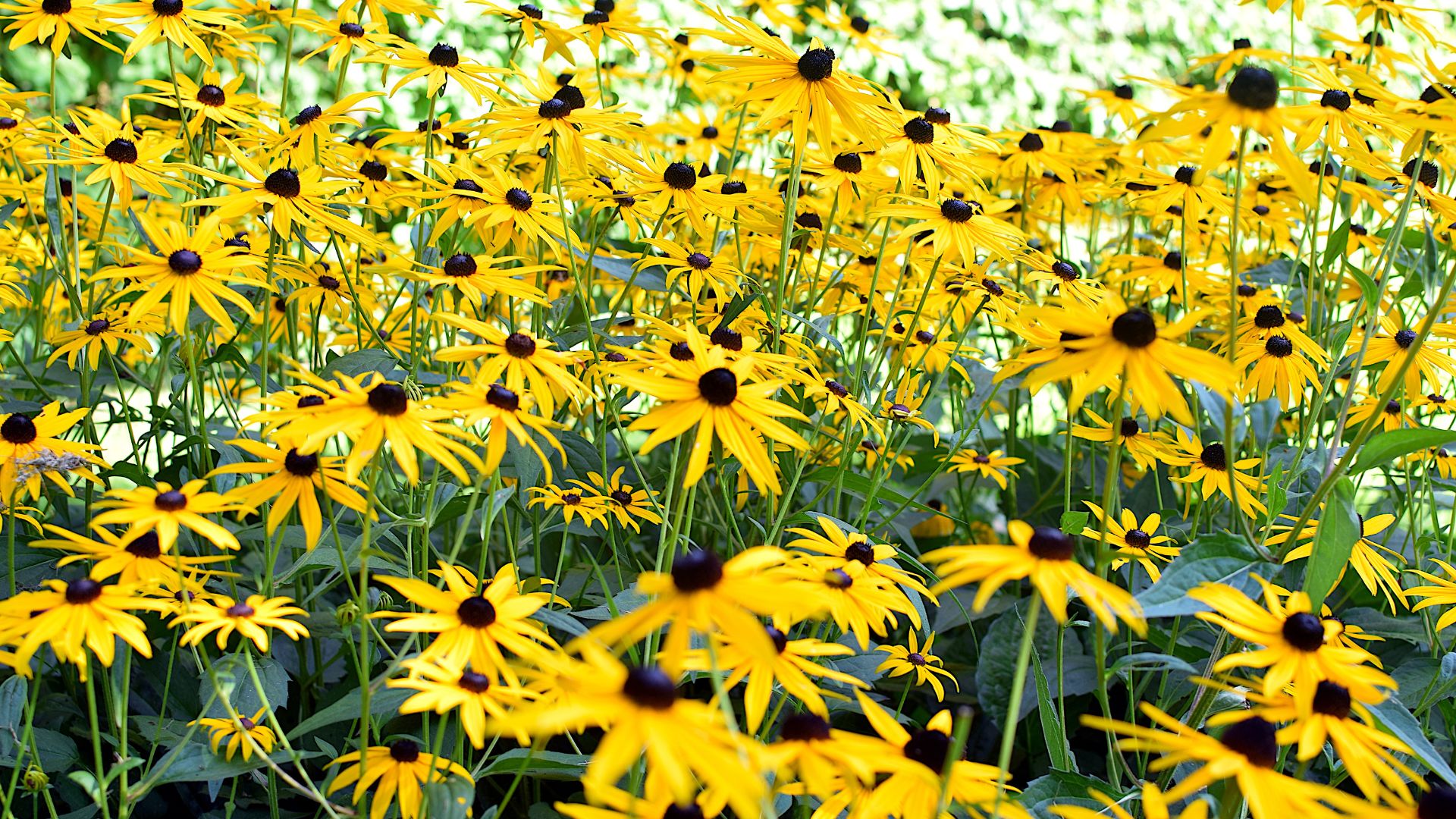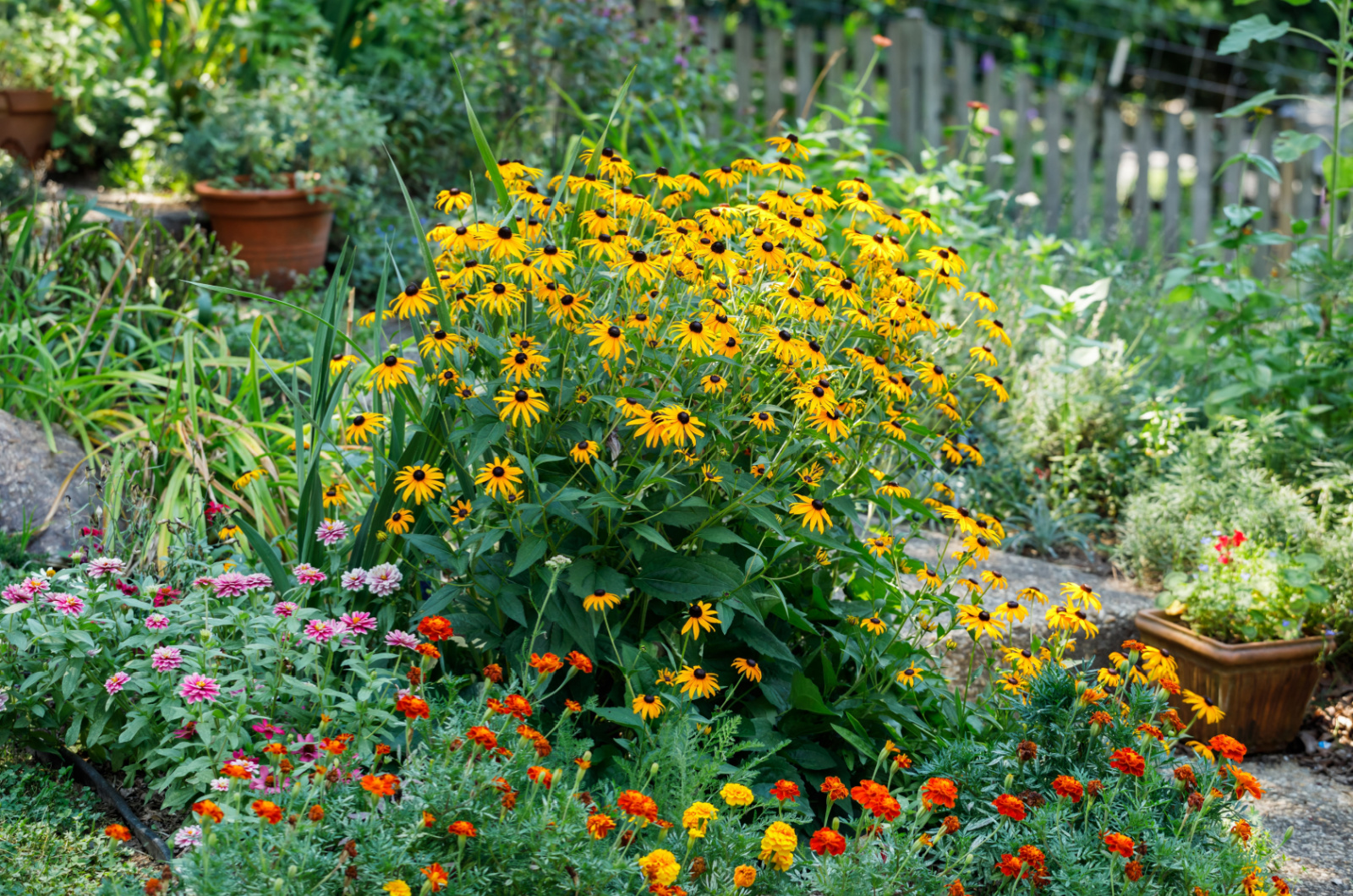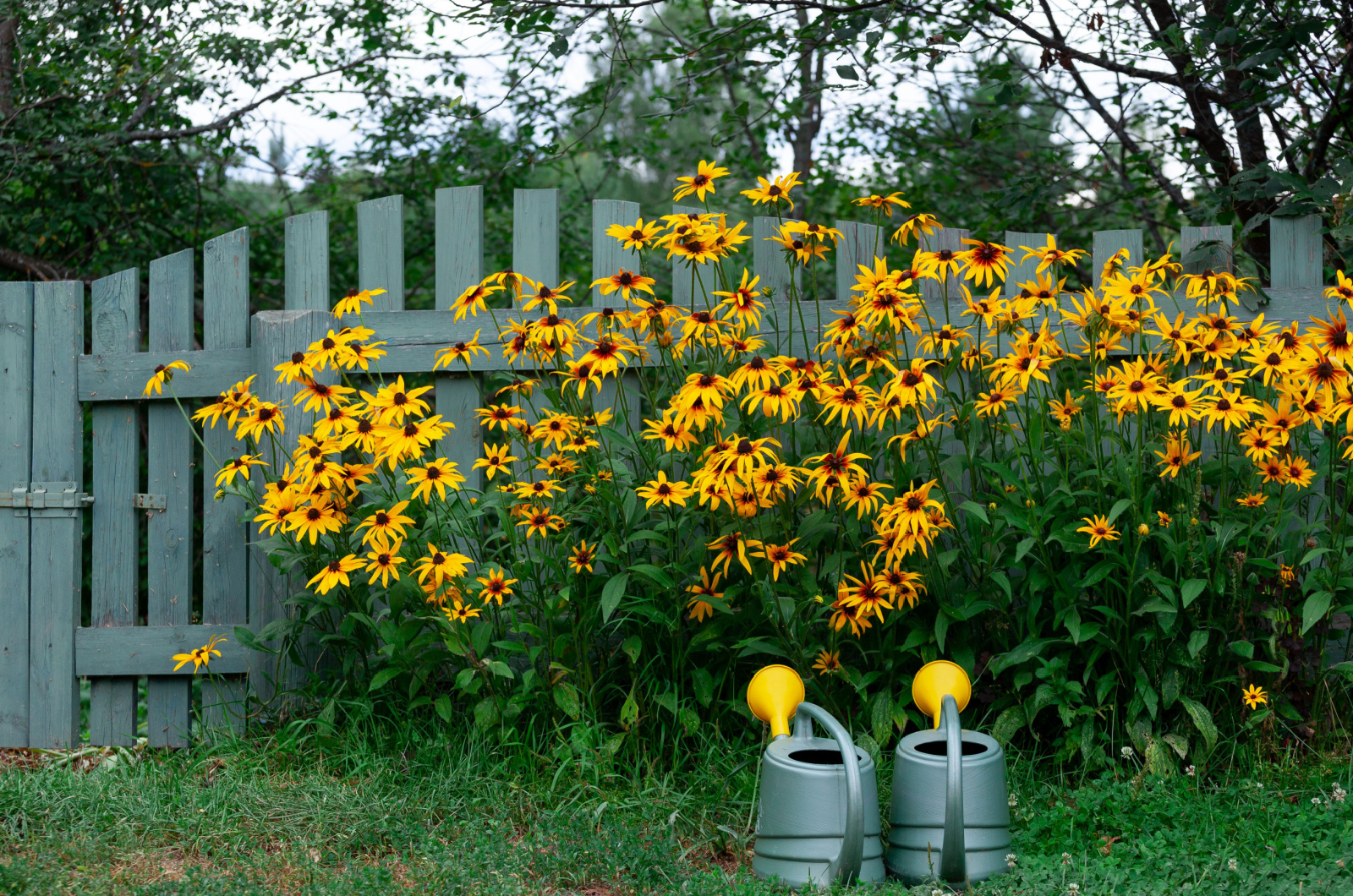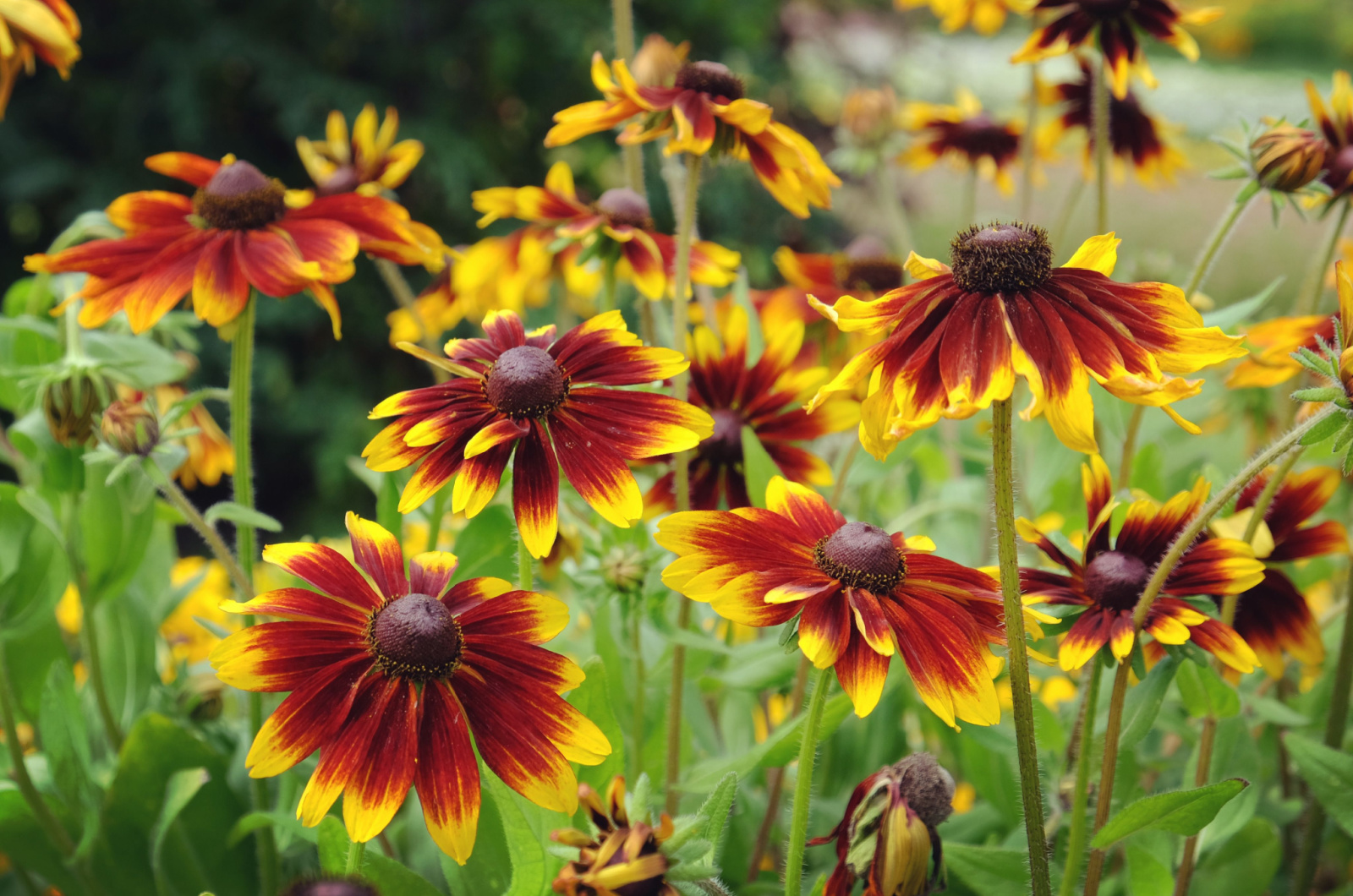If you’re looking to fill your garden with vibrant bursts of sunshine, rudbeckia flowers are a perfect choice. With their cheerful golden petals and captivating beauty, these plants bring a touch of warmth and color to any landscape!
Even if you are a beginner, you won’t have any issues with growing rudbeckias as these lovely flowers are so easy to take care of.
In this guide, we are going to explain how to plant both the annual and perennial rudbeckia, how to take care of them, and also some of the best varieties. So, stay tuned!
Planting Rudbeckia
Planting rudbeckia is pretty straightforward. First of all, you have to find the perfect location. These are sun-loving plants so it’s best to plant them in a sunny spot. Still, they can tolerate some shade even though they won’t bloom as much.
Make sure that the soil is well-draining; you can even add some compost and well-rotted manure to improve the soil’s fertility.
Start by digging a hole that is the size of the plant’s rootball. Put your plant in, cover it with soil, and then water thoroughly. You can add some plant food as well. A layer of mulch also helps with moisture retention.
You can also plant some rudbeckia companion plants nearby such as Perovskia blue spire, Helenium Sahin’s early flowerer, and Salvias.
Rudbeckia is also a great companion to Celosia, Asters, and Coneflowers.
Annual vs Perennial Rudbeckia
Rudbeckias can grow as annuals and perennials. If you want to grow an annual rudbeckia, then you should plant the seeds anytime from February to April. Sow them using seed compost in pots or trays.
Don’t add any additional compost as the seeds need light to germinate. Put your pots and trays on a sunny windowsill. Once two sets of leaves have emerged, it’s time to transplant them into a larger pot. Plant them in soil during late May or early June.
In case you want to grow a perennial rudbeckia, start sowing the seeds between February and July. Use pots or trays with well-draining seed compost.
It’s important to keep your seeds in a warm spot or a propagator so that the temperature is between 65 to 70 degrees Fahrenheit.
Once the seedlings are established, you can transplant them to larger pots for a couple of weeks. Once there is no chance of frost, it’s time to transplant them outside.
Rudbeckia Plant Care Guide
Growing rudbeckias is as easy as planting them. First of all, it is important to keep the soil moist, which is why you have to water them frequently. Water them once the soil feels dry.
Remember to keep them in a location where they can get plenty of sunlight. Once they start blooming, you can deadhead flowers to encourage more flower production.
If you are growing a perennial rudbeckia, leave the stems until February. Then, you should cut them to the ground and add mulch over the stems so that they can develop properly the next growing season. Perennial rudbeckias are usually divided every two to three years.
If you want to know more about rubeckia plant care, then check out this video:
The Best Annual Rudbeckia Varieties
Annual rudbeckias are flowers ideal for containers, borders, and combining with other plants like ornamental grasses, persicarias, and salvias.
Here are some of the best rudbeckia annuals:
• Rudbeckia Toto – compact cultivar that has yellow blooms with distinctive red centers. Plant size: 16 inches tall and 12 inches wide.
• Rudbeckia Prairie Sun – this cultivar has large yellow flowers with unique pale green centers. Plant size: 32 inches tall and 16 inches wide. These sturdy plants don’t require support.
• Rudbeckia Chim Chiminee – unique cultivar that produces red and orange flowers with bushy appearances. Plant size: 24 inches tall and 18 inches wide.
• Rudbeckia Aries – this is a two-tone flower with bright yellow and deep red variegations. It is a long-lasting flower that lasts from July to October. Plant size: 30 inches tall and 18 inches wide.
• Rudbeckia Cherry Brandy – this rudbeckia has cherry red flowers with chocolate brown cones. Often used as a cut flower, but also for late-season borders. Plant size: 24 inches tall and 18 inches wide.
• Rudbeckia Sahara – a new cultivar that has prominent warm flowers in copper, caramel, peach, and dusky pink tones. Plant size: 24 inches in height and 18 inches spread.
The Best Perennial Rudbeckia Varieties
Now, let’s meet some of the hardy rudbeckia perennials. These usually produce sturdy stems that look great in borders. Here are some of the best rudbeckia perennials:
• Rudbeckia Henry Eilers – vibrant cultivar that produces bright yellow flowers during summer. It has unique petals that roll in instead of lying flat. Plant size: 4 feet tall and spreads 27 inches.
• Rudbeckia Herbstsonne – tall stems and unusual yellow flowers with petals that hang downwards make this cultivar unique. Plant size: 6 feet tall and 3 feet wide, so they are not suitable for smaller gardens.
• Rudbeckia Green Wizard – mysterious cultivar that has dark brown cones with gold pollen around its base that is also surrounded by green sepals instead of colorful large petals. Plant size: 4 feet tall and 27 inches wide. • Rudbeckia Goldsturm AGM – shorter cultivar that has yellow daisy-like flowers that bloom from July to October. These are usually combined with short grasses or other long-lastings perennials.




